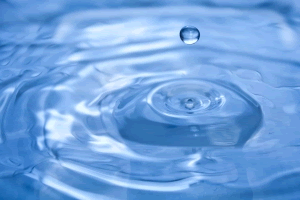 Hydrotherapy, or, water therapy is the use of water to promote healing. It is one of the oldest, simplest and most effective of all the natural therapies. Water treatments include taking natural spring waters internally for their beneficial mineral content, and external treatments such as bathing, douches and taking exercise in water. Water cures originated in the use of natural spring waters, often minerally rich, and sometimes also naturally warm to hot or very cold, and spas or watering places where people went to take the cure became very popular all over Europe from the early 19th century. Many European spas were established during the time of roman occupation and are still in use.
Hydrotherapy, or, water therapy is the use of water to promote healing. It is one of the oldest, simplest and most effective of all the natural therapies. Water treatments include taking natural spring waters internally for their beneficial mineral content, and external treatments such as bathing, douches and taking exercise in water. Water cures originated in the use of natural spring waters, often minerally rich, and sometimes also naturally warm to hot or very cold, and spas or watering places where people went to take the cure became very popular all over Europe from the early 19th century. Many European spas were established during the time of roman occupation and are still in use.
Water of either extreme of temperature is used , or can be used alternately. Hot water first stimulates and relaxed, while cold water invigorates. Alternating hot and cold water stimulates blood and lymph circulation, relieves congestion, and tones tissues.
Through a variety of techniques, naturopaths use hydrotherapy to improve circulation, stimulate the vital force, ease pain, reduce fever and relax the nervous system. Water therapy also contributes to encouraging the efficient elimination of wastes from the skin.
Baths
The various forms of baths include arm and foot baths, sitz baths and a whole body immersion. Special baths include Turkish baths, spa baths, sea water baths (or thalassotherapy), saunas and variously baths containing herbs such as moor peat. Massage is often recommended to be given in conjunction with the bath.
Sitz baths are hip baths used as tonic or in the treatment of abdominal or pelvic disorders. The baths comprise of two bowls. You sit in one containing hot water and place your feet in cold water and vice versa. Alternatively, some naturopaths advocate transferring from hot to cold every two minutes using one sitz bath at a time. Sitz baths may be used to treat liver or kidney problems among other things. The purpose of the bath is to relieve tissue congestion and improve blood and lymph circulation in the pelvic area.
Douches
Douches or showers were first used by the naturopath Vincent Preissnitz, who developed hydrotherapy in the 19th century. Cold water was poured over the patient with great force while he or she was also hosed with jets of water. Today, douches involve the use of hot and cold water sprays on specific areas of the body. When possible, a strong jet of water is used, although treatment is adjusted to suit the individual. In what is known as the Scottish douche, the jets are directed at the spine to stimulate the nervous system. Other examples are the Blitz jet-douche and the needle shower.
Compresses
Compresses are either large pieces of absorbent cotton, lint or sometimes small towels that are soaked in either hot or cold water and applied to a particular part of the body. For example, for a painful and inflamed joint a cold compress will be used. The joint will then be wrapped in a thicker piece of dry fabric which helps to retain heat generated by the compress and so ease the pain and inflammation. Compresses can be made using infusions or pastes made from herbal remedies such as arnica, comfrey and marshmallow or St. John’s wart. Fomentations, which involve the application of hot and cold towels, are used to stimulate circulation ease pain and relieve lung congestion. Packs often consist of whole body trunk or abdominal wraps used to reduce fever and encourage elimination of toxins through the skin.
Walking in water
Nineteenth century hydro therapists advocated walking barefoot in dew or snow every morning. This may be impractical today, but walking in cold water baths about 35 centimetres deep is part of the regime in many modern hydrotherapy clinics and is said to have a general restorative effect. People with circulatory problems or diabeties should probably avoid this treatment unless under medical supervision.